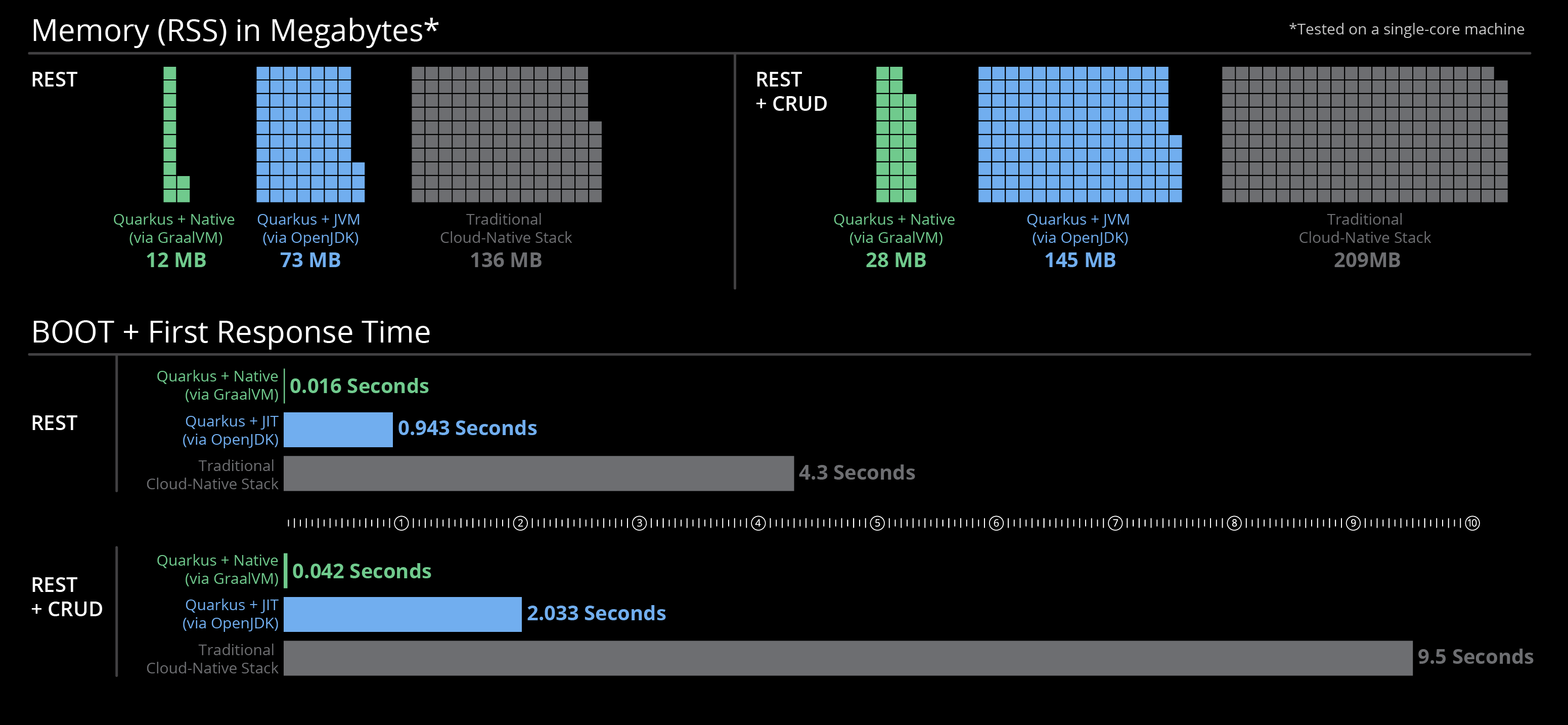Traditional Java stacks were engineered for monolithic applications with long startup times and large memory requirements in a world where the cloud, containers, and Kubernetes did not exist. Java frameworks needed to evolve to meet the needs of this new world.
Quarkus was created to enable Java developers to create applications for a modern, cloud-native world. Quarkus is a Kubernetes-native Java framework tailored for GraalVM and HotSpot, crafted from best-of-breed Java libraries and standards. The goal is to make Java the leading platform in Kubernetes and serverless environments while offering developers a framework to address a wider range of distributed application architectures.
For more information about Quarkus, please go https://quarkus.io/.
Dapr is a portable, event-driven runtime that makes it easy for any developer to build resilient, stateless and stateful applications that run on the cloud and edge and embraces the diversity of languages and developer frameworks.
Leveraging the benefits of a sidecar architecture, Dapr helps you tackle the challenges that come with building microservices and keeps your code platform agnostic.
For more information about Dapr, please go https://dapr.io/.
Quarkus Dapr is a Quarkus extension to integrate with Dapr.
Quarkus Dapr Extension enables Java developers to create ultra lightweight Java native applications for Function Computing and FaaS scenes, which is also particularly suitable for running as serverless.
With the help of Dapr, these ultra lightweight Java native applications can easily interact with external application and resources. Dapr provides many useful building blocks to build modern distributed application: service invocation, state management, input/output bindings, publish & subscribe, secret management......
Because of the advantages of sidecar model, the native applications can benefit from Dapr's distributed capabilities while remain lightweight without introducing too many dependencies. This is not only helping to keep the size of java native applications, but also making the native applications easy to build as native images.
With Quarkus Dapr Extension, it's pretty easy for java developers.
To publish events to your message broker, just inject a dapr client to your bean and call it's publishEvent() method:
@Inject
SyncDaprClient dapr;
dapr.publishEvent("messagebus", "topic1", content.getBytes(StandardCharsets.UTF_8), new HashMap<>());To subscribe events for your message broker, adding some annotations on your method is enough:
@POST
@Path("/topic1")
@Topic(name = "topic1", pubsubName = "messagebus")
public String eventOnTopic2(String content) {......}For more details and hands-on experiences, please reference to our Demo.
Thanks goes to these wonderful people (emoji key):
Amos Feng 💻 🚧 |
Naah 💻 🚧 |
Sky Ao 💻 🚧 |
Yugo Sakamoto 📖 |
Matheus Cruz 💻 |
This project follows the all-contributors specification. Contributions of any kind welcome!




